The coast from the Needles to Waikaro Point has some amazing rocky country for both straylining in close.
FUN ON THE WILD SIDE
Paul Walker continues his romp around Great Barrier Island and explores the north eastern side, or as the locals call it the wild side.
If you read the article about the western side of the island (AB May-June 2021), you will recall I finished that journey at the Needles, so I guess its appropriate that we start this north eastern journey from there.
First a word of caution, I would not be undertaking this trip in any boat under 7-8m. You will need a large fuel capacity, food drink and supplies for about a week. You may not be intending to stay for a week but believe me this place is so captivating you wont want to leave. if you have the choice a launch with all its onboard facilities is the nicest way to take this trip. Above all else check and double check for a clear spell of weather, if it comes in from the north/north east while your around there, places to hide are few and far between, so it could become very uncomfortable and spoil what could have been a fantastic trip. Check that weather.
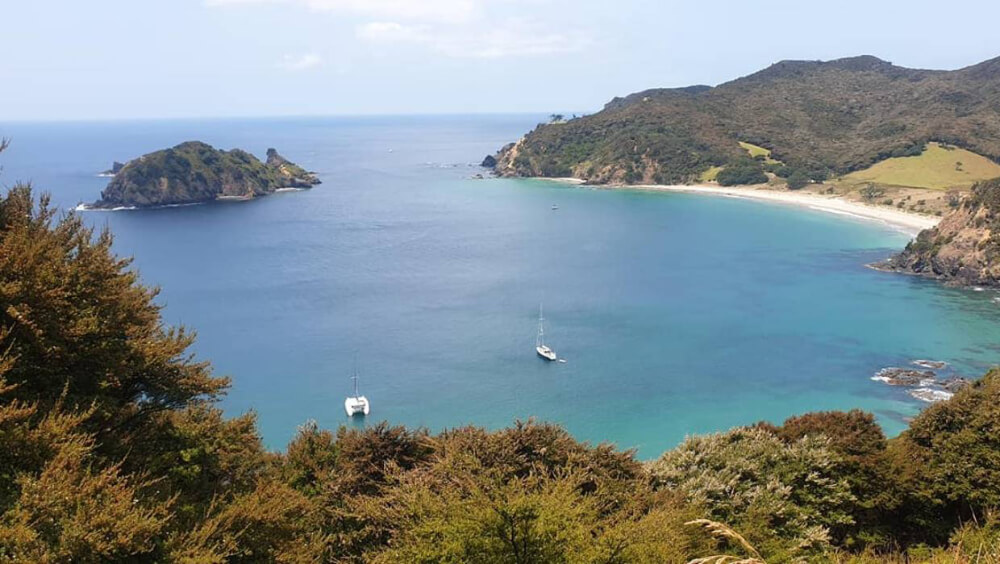
Now back to the Needles. As you cruise around past this group of pinnacles a huge portion of the North coast opens up to you. This is where marine charts 531 or 522 will be a great help. The coast from the Needles to Waikaro Point has some amazing rocky country for both straylining in close. Or you can take the tender and get up onto the rocks for some excellent land-based fishing. There’s some big fish through here so making the effort will be well worth it.
You may choose to overnight in Rangiwhakaea Bay or you may choose to motor down to Waikaro Point. As you come around this point the coast changes into the beautiful white expanse of Whangapoua beach. In the corner of this bay tucked under Waikaro point you will find the graves of some of the victims from the sinking of the Wairarapa back at Miners Head. This corner can be a nice place to overnight as long there is little or no surf running.
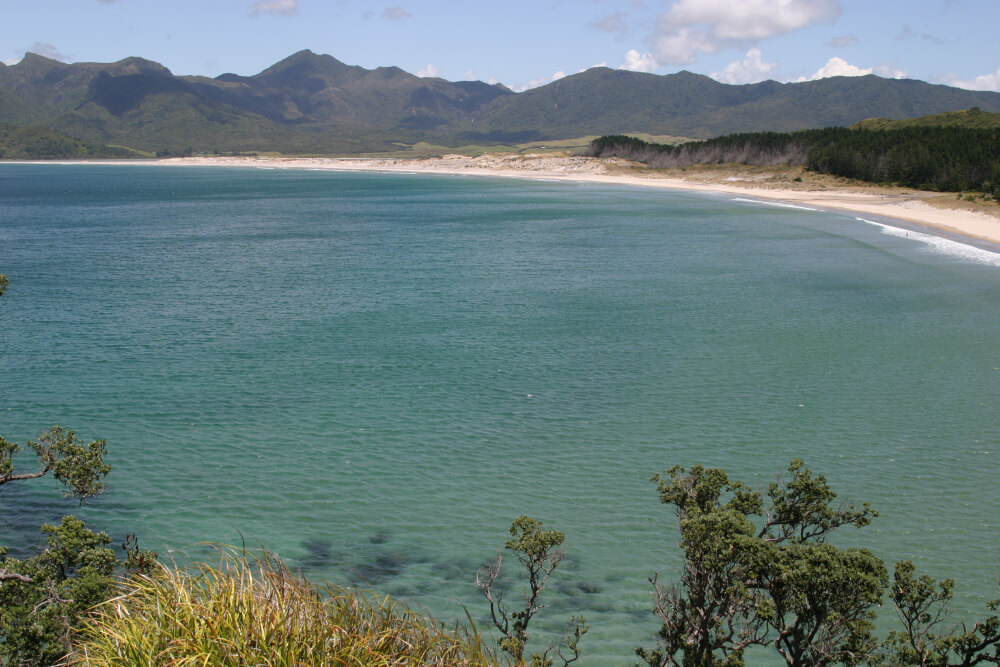
Another option would be to soft bait or slow jig across the length of Whangapoua bay and tuck in for the night behind the little island in Harataonga Bay. This bay has some of the best shelter on this coast, but also leaves you nice and handy for an early morning attack on Arid Island next day.
PRODUCTIVE ARID ISLAND
Arid Island is a fishing magnet and mecca for all boats that travel down this coast, its about two nautical miles from your safe overnight anchorage at Haratonga bay. Fishing your way around the island the first place to try would be Te Akau Point on the southern end of Arid. There is a shelf that runs out some distance from this point, and bottom fishing or straylining can be very productive here. Heading up the western side of Arid is a rock that comes up to 7m. It has a good surrounding reef and is situated just a bit south of Maturoa Point.

Inside Maturoa Point is a lovely safe little cove. It’s a great place to have a nice calm lunch in anything but a northwester. The best fishing really starts from February and March and all of this area and right down the eastern coast of Arid fishes amazingly well. There are endless reefs, pinnacles, and bricks. Just check chart 531 and pick a spot you wont be disappointed. You can expect big snapper, kingies, terakihi, trevally, hapuka, red snapper, and a bunch of other reef fish. After a day at Arid you may want to overnight back at the safe anchorage of Haratonga Bay before heading east on the next part of the wild side journey.
Leaving Harataonga Bay, the area just east of the small island guarding the bay and all the way down to Wahkatautuna Point is a good place to try for a morning fish. If no luck there, continue on down the coast to Korotiti Bay this whole piece of coast right down to Awana bay can and does fish very well. For all of these areas you can use a variety of fishing styles. Bottom bait fishing, soft baits, slow jigs or jigs. it just depends on the type of country underneath you and water depth.
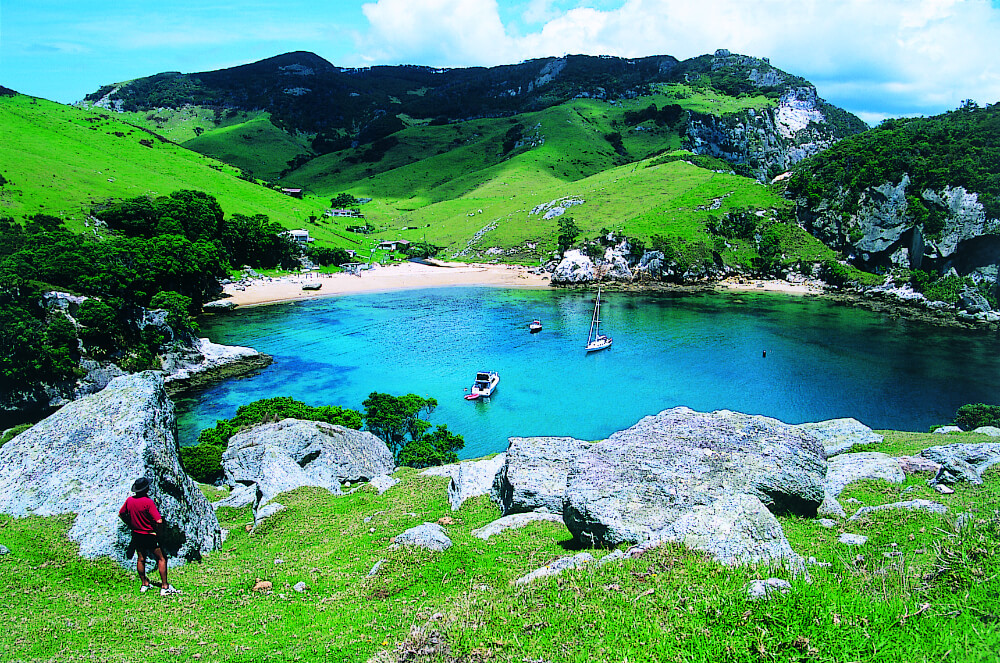
Dividing Awana Bay from Palmers Beach is a headland, adjacent to which is Lion Rock and its surrounding reef. I’m sure this would be a great fishing spot but unfortunately it sits within a large no fishing or anchoring cable zone. Check your chart to give this area a miss and continue east.
BIG BAYS
Three big beaches will now come into view, palmers is pretty much out of play because of the cable area, that leaves you with the great sweep of Kaitoke Beach, and then the smaller Meadlands. By staying out behind the breakers of these two surf beaches, again using soft baits or slow jigs drifting across the sand in 10-30m will probably fill your fish bin if you haven’t filled it already. Then heading into the corner of Meadlands beach and tucking under the Shakespeare Point you should be safe for the night.
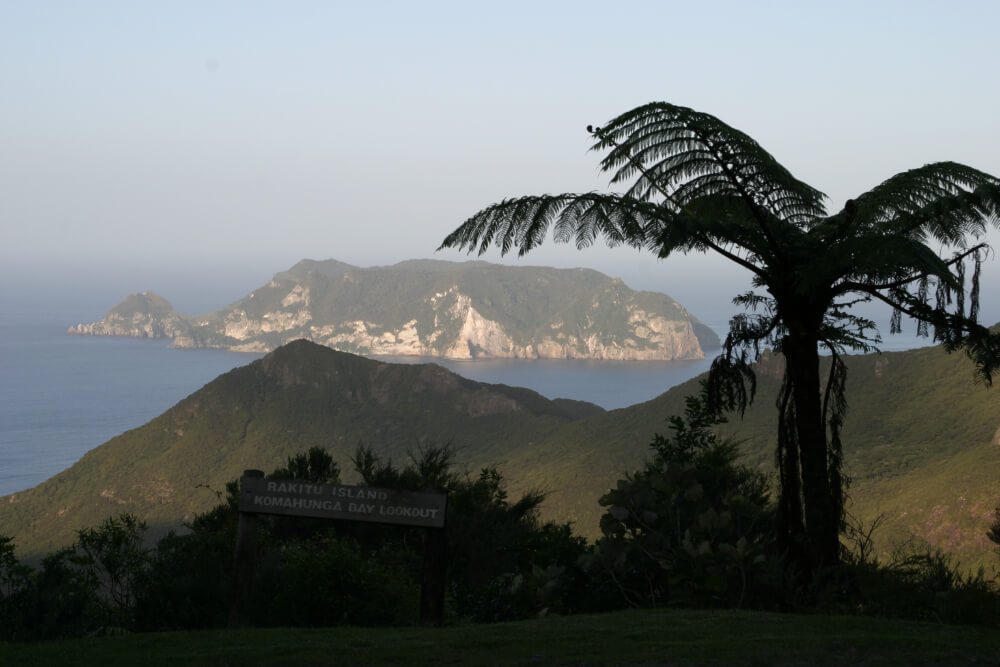
After hopefully a comfortable night its now time to again head east on the last part of your journey. Between the 30-50m depth lines, and from the cable boundary line all the way down to Windy Hill where the wreck of the Wiltshire lies, there are a string of deep water pinnacles. As you travel down this coast it would pay to check out as many as you can with the sounder as they can be very productive. Deep water fishing tactics will apply on these pins, slow jigs, jigs, or big bait rigs should produce the goods so give one or two of them a try.
From the pinnacles we come down into Rosalie Bay, fishing inside the 30m mark from the northern point right down to the little island at the southern end of the bay, this area on the right day can fish very well. Whether your drifting the length of the bay with soft bait or slow jigs, or on a nice day you may wish to anchor up on a likely spot and bait fish for a while, it’s a nice spot to kick back and relax.
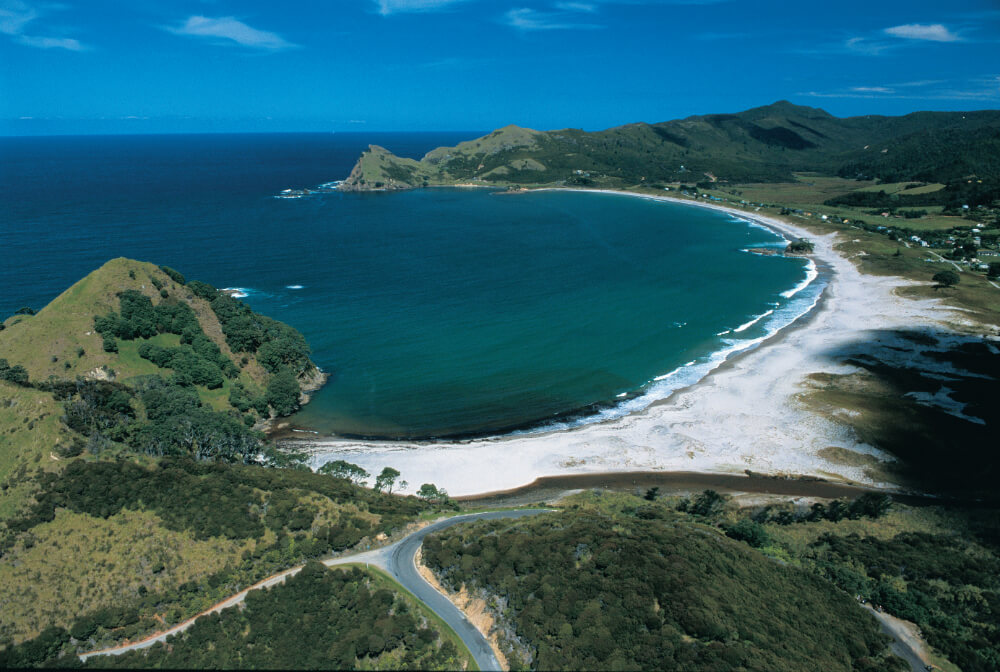
Beyond Rosalie Bay we finally come to Cape Barrier, where this long journey started back in the part one article on the western side. As I said in part one, Cape Barrier is not a good place to hang around, the strong currents and pressure waves from the Colville channel can make it pretty uncomfortable. Luckily Tryphena harbour is only five miles up the coast, where you drop the anchor in the calm and safety of the harbour, crack open a beer or two hopefully there is some left and go over your trip down the wild side. I’m sure there will be some great events and stories to go over.
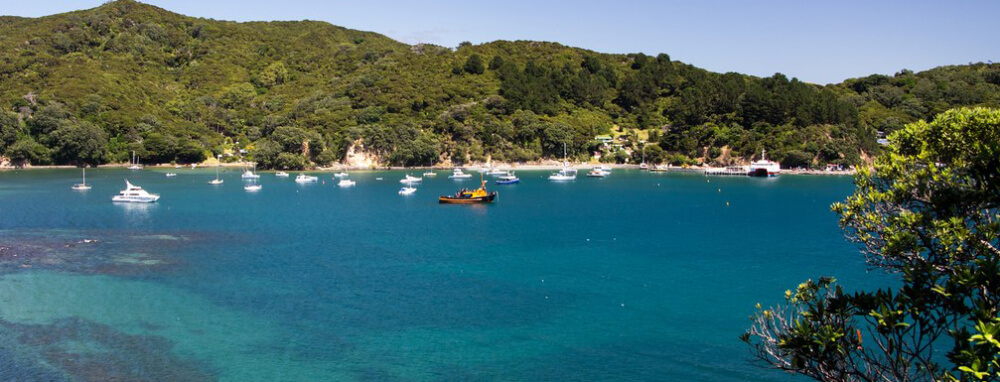
Any of you that own a boat capable of making this trip, or perhaps have a friend that has a boat that is, now is the time to be making some planes and getting the logistics worked out. Remember there are no food stores or fuel stations around there, just unforgettable fishing and scenery.
Should a boating trip be difficult to arrange or perhaps boating isn’t for you, other possibilities are open to you. There are passenger ferries that have regular trips to the island, including vehicle ferries for those wishing to take there cars over to be more mobile, plus there are buses, rental cars and taxis on the island.
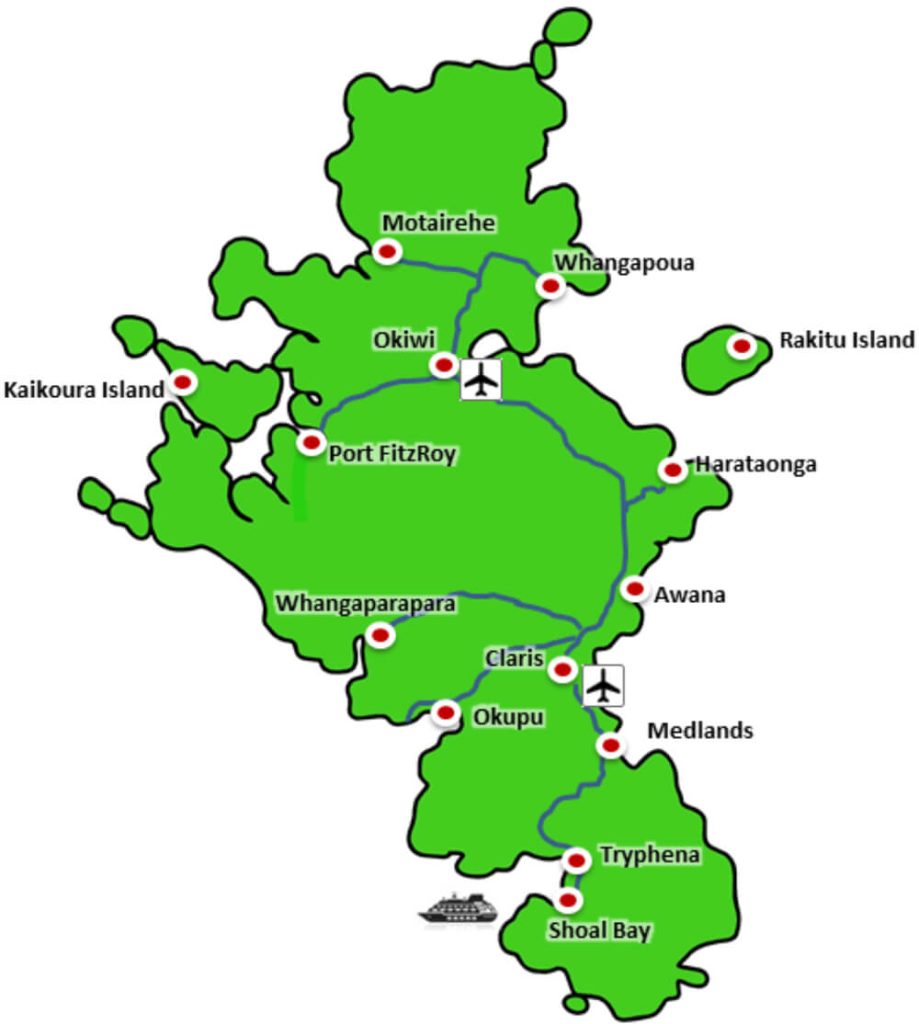
For those wanting to make the most of there time there are daily flights from north shore airfield at Dairy Flat. So for the land based or rock fishers the possibilities are endless, and you folks can walk on the wild side. Check the chart for spots that are accessible and maybe ask the locals once you get there. As for accommodation there are camping grounds, cabins, motels, right up to exclusive lodges, the choice is yours.
So there you have it get planning for your turn to have some fun on the wildside.




